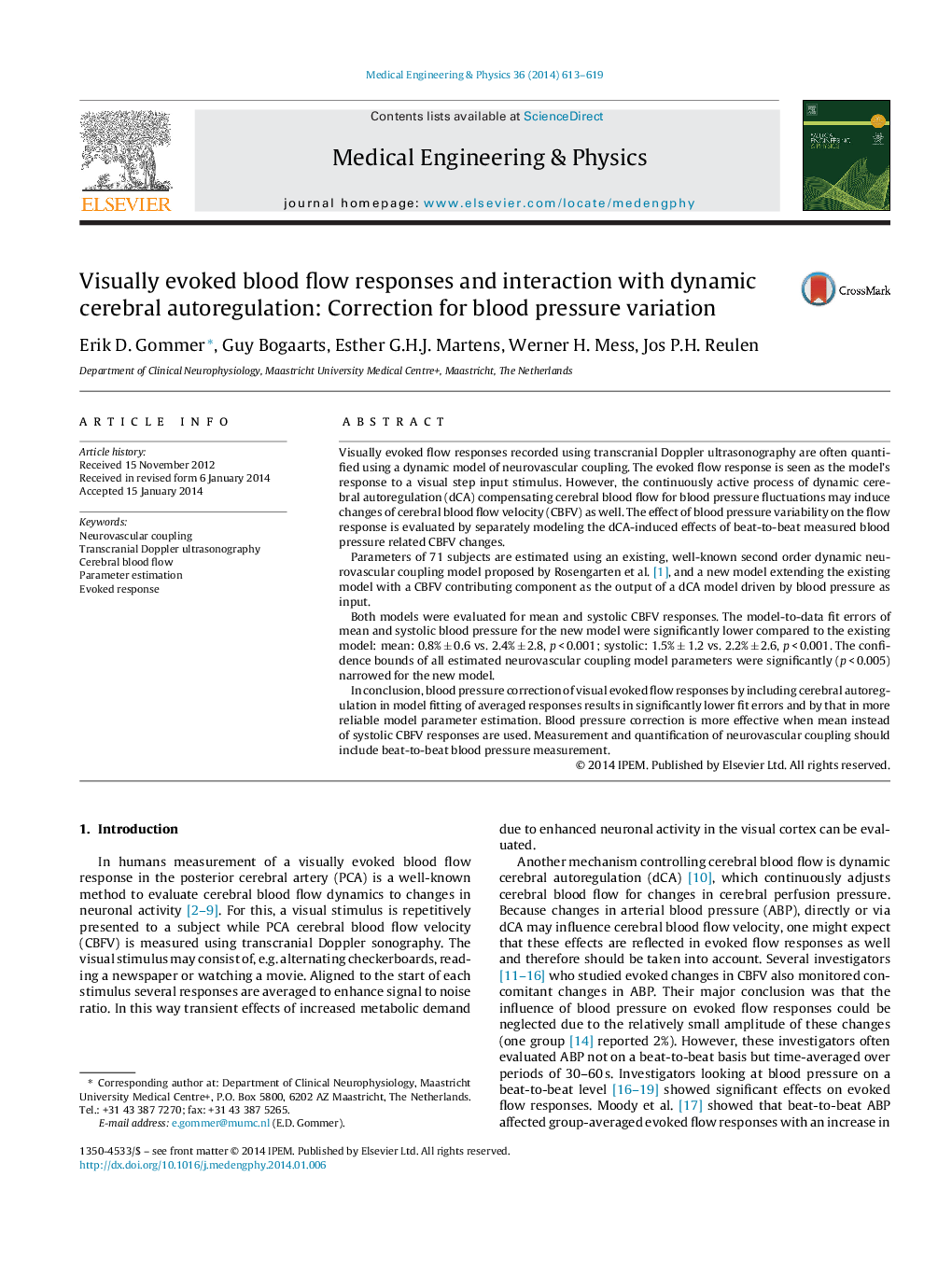| کد مقاله | کد نشریه | سال انتشار | مقاله انگلیسی | نسخه تمام متن |
|---|---|---|---|---|
| 875989 | 910818 | 2014 | 7 صفحه PDF | دانلود رایگان |
Visually evoked flow responses recorded using transcranial Doppler ultrasonography are often quantified using a dynamic model of neurovascular coupling. The evoked flow response is seen as the model's response to a visual step input stimulus. However, the continuously active process of dynamic cerebral autoregulation (dCA) compensating cerebral blood flow for blood pressure fluctuations may induce changes of cerebral blood flow velocity (CBFV) as well. The effect of blood pressure variability on the flow response is evaluated by separately modeling the dCA-induced effects of beat-to-beat measured blood pressure related CBFV changes.Parameters of 71 subjects are estimated using an existing, well-known second order dynamic neurovascular coupling model proposed by Rosengarten et al. [1], and a new model extending the existing model with a CBFV contributing component as the output of a dCA model driven by blood pressure as input.Both models were evaluated for mean and systolic CBFV responses. The model-to-data fit errors of mean and systolic blood pressure for the new model were significantly lower compared to the existing model: mean: 0.8% ± 0.6 vs. 2.4% ± 2.8, p < 0.001; systolic: 1.5% ± 1.2 vs. 2.2% ± 2.6, p < 0.001. The confidence bounds of all estimated neurovascular coupling model parameters were significantly (p < 0.005) narrowed for the new model.In conclusion, blood pressure correction of visual evoked flow responses by including cerebral autoregulation in model fitting of averaged responses results in significantly lower fit errors and by that in more reliable model parameter estimation. Blood pressure correction is more effective when mean instead of systolic CBFV responses are used. Measurement and quantification of neurovascular coupling should include beat-to-beat blood pressure measurement.
Journal: Medical Engineering & Physics - Volume 36, Issue 5, May 2014, Pages 613–619
